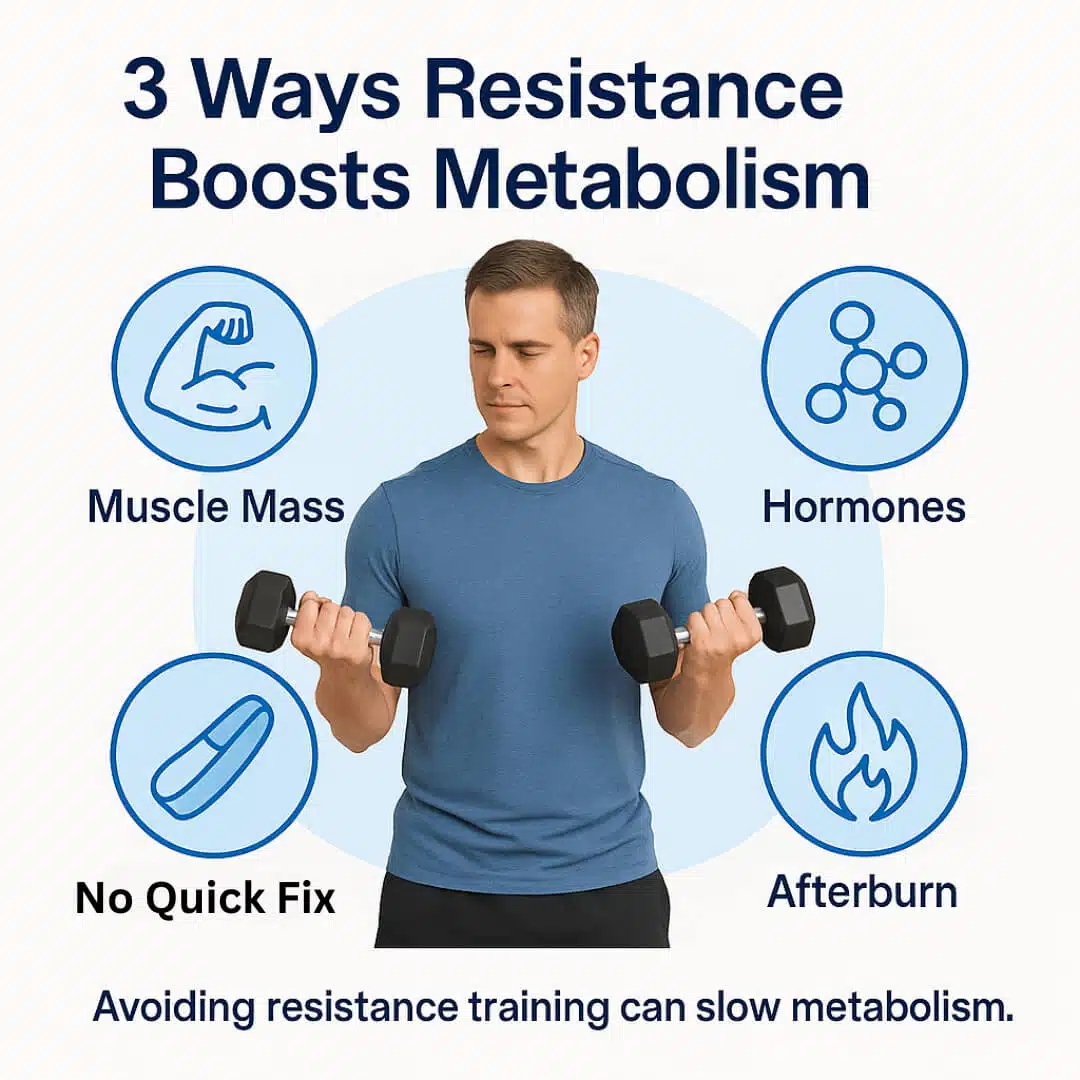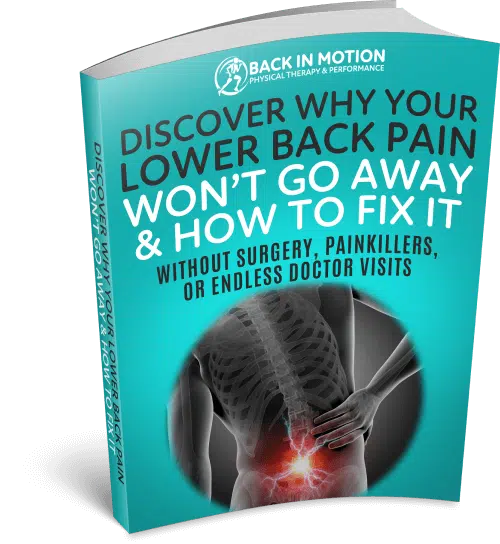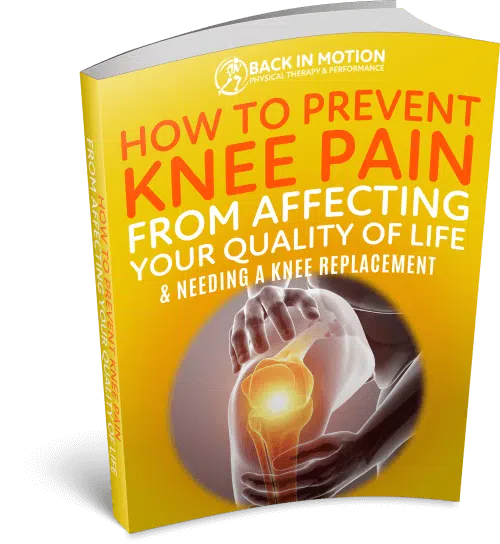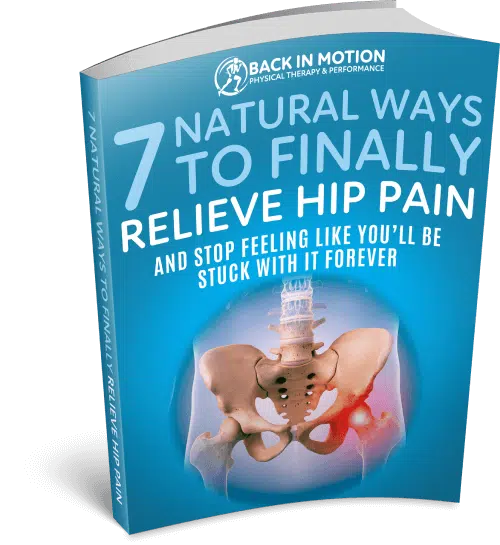3 Ways Resistance Boosts Metabolism (And Why Avoiding It Backfires)
If you’ve ever felt like your metabolism has “slowed down” or your body isn’t responding the way it used to, you’re not imagining it. Many active adults, athletes, and those over 50 notice that, over time, it becomes harder to lose fat, maintain strength, or bounce back from setbacks—even with regular exercise.
Every day, we see clients who are eating well, walking often, and even attending fitness classes, but still feel like their body is stuck. The reason? They’re not including enough resistance.
In this article, we’re breaking down exactly how resistance training improves metabolism, why skipping it can backfire (especially as we age), and what to do if you’ve been unintentionally under-challenging your body.
What We Mean By “Resistance”
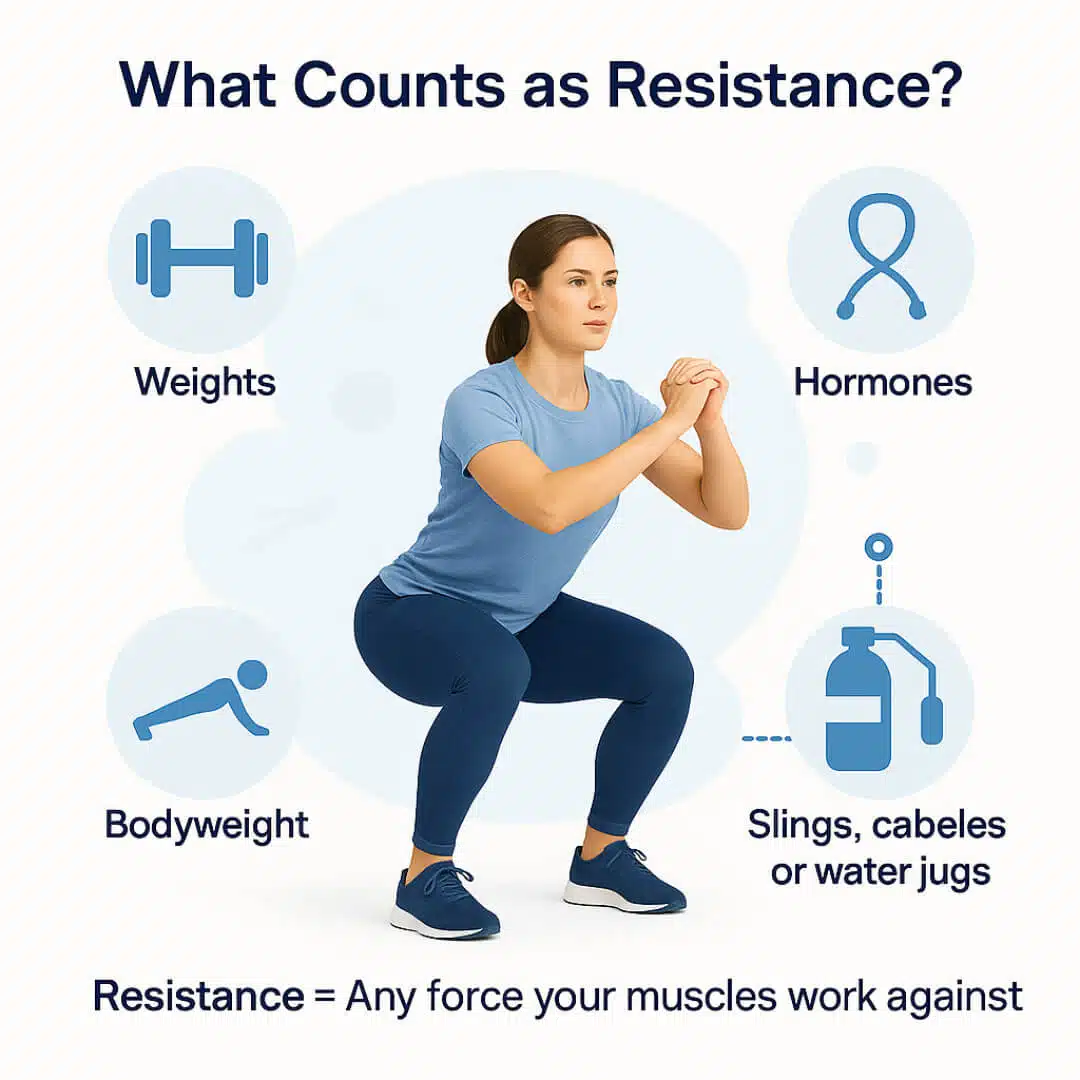
Let’s clarify one thing upfront: resistance training doesn’t have to mean lifting heavy barbells in a gym.
Resistance simply means applying a force your body has to work against. That can be:
- Weights
- Bands
- Bodyweight
- Slings, cables, water jugs—anything that challenges your muscles
For your metabolism to thrive, your muscles need to be challenged consistently. Without that stimulus, your body becomes extremely efficient—and unfortunately, efficiency isn’t great for fat loss.
The #1 Metabolic Engine You’re Probably Under-Using: Muscle
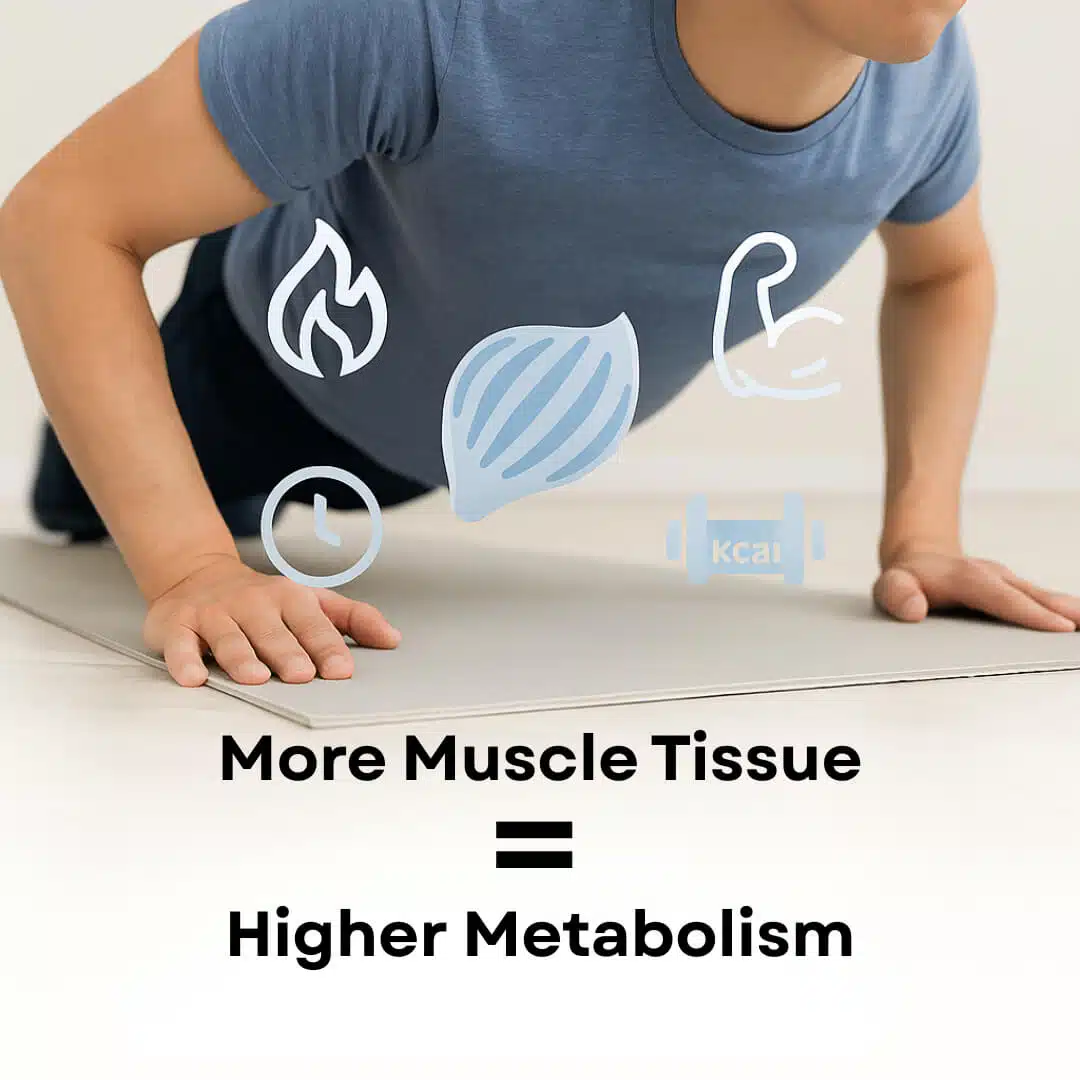
Muscle tissue isn’t just for aesthetics or strength—it’s metabolically active tissue. That means it burns calories all day long, even when you’re not moving.
But here’s the kicker: we naturally lose muscle mass as we age—a process called sarcopenia—and if you’re not actively resisting that decline with resistance training, your resting metabolic rate will drop, too.
3 Ways Resistance Training Boosts Your Metabolism
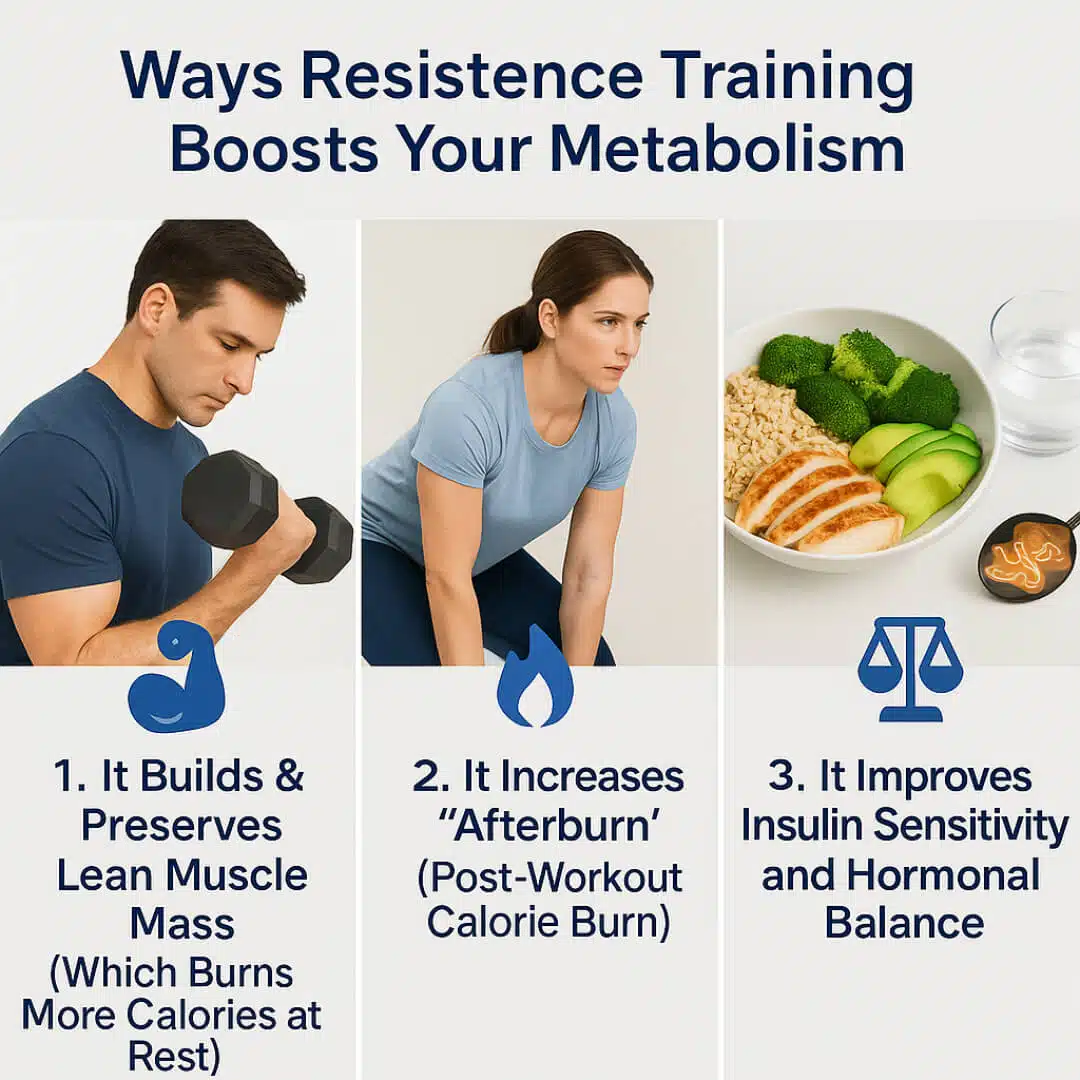
Let’s dig into the three biggest metabolic advantages resistance offers—and what you’re risking when you avoid it.
1. It Builds & Preserves Lean Muscle Mass (Which Burns More Calories at Rest)
Muscle is like your body’s metabolic engine. The more lean muscle you have, the more fuel (calories) you burn—even when you’re sleeping, sitting, or just going about your day. And unlike cardio, which mostly burns calories while you’re moving, muscle keeps working for you around the clock.
Here’s what that means in real terms:
- Each pound of muscle burns roughly 6–10 calories per day, compared to fat, which burns 1–2.
- Resistance training helps you preserve muscle while losing fat, which reshapes your body and boosts your resting metabolism.
- If you’re over 40 and not strength training, you could be losing 3–5% of your muscle mass per decade.
Without enough resistance, your body gradually trades muscle for fat, even if the number on the scale doesn’t change. That’s when your energy dips, metabolism slows, and fat loss feels like a losing battle. But the good news? With the right kind of challenge, you can rebuild your engine and turn things around.
2. It Increases “Afterburn” (Post-Workout Calorie Burn)
One of the unique benefits of resistance training is something called EPOC—excess post-exercise oxygen consumption. That’s a fancy way of saying your body keeps burning calories even after your workout is over.
What that means for you is simple—after a good strength workout, your body works harder to:
- Replenish oxygen levels
- Repair muscle tissues
- Clear out metabolic byproducts
- Restore energy stores
And all of that takes energy—sometimes for up to 24–48 hours after your workout, depending on intensity.
Cardio, on the other hand, tends to burn calories during the workout, but once it’s over, your burn rate drops quickly. So, if you’re doing lots of cardio but skipping resistance, you’re missing a major opportunity to turn your body into a more efficient fat-burning machine—long after you’ve left the gym.
3. It Improves Insulin Sensitivity and Hormonal Balance
Your metabolism isn’t just about calories—it’s about how your body responds to the foods you eat, especially carbohydrates.
When your muscles are regularly challenged, they become more efficient at using glucose (blood sugar), which improves insulin sensitivity and reduces fat storage—particularly around the midsection. Plus, resistance training helps to:
- Encourages the release of anabolic (building) hormones like growth hormone and testosterone (yes, even in women), which support muscle repair and fat breakdown
- Counteract the effects of cortisol, your stress hormone, which when chronically high, can lead to belly fat and inflammation
- Enhance insulin function, which means more stable energy, fewer cravings, and less fat storage.
So, if you’ve been avoiding resistance training, you’ve been missing out on a natural, drug-free way to balance your metabolism and hormones—especially important for women over 40 and anyone managing pre-diabetes, PCOS, or chronic inflammation.
What Happens When You Avoid Resistance?
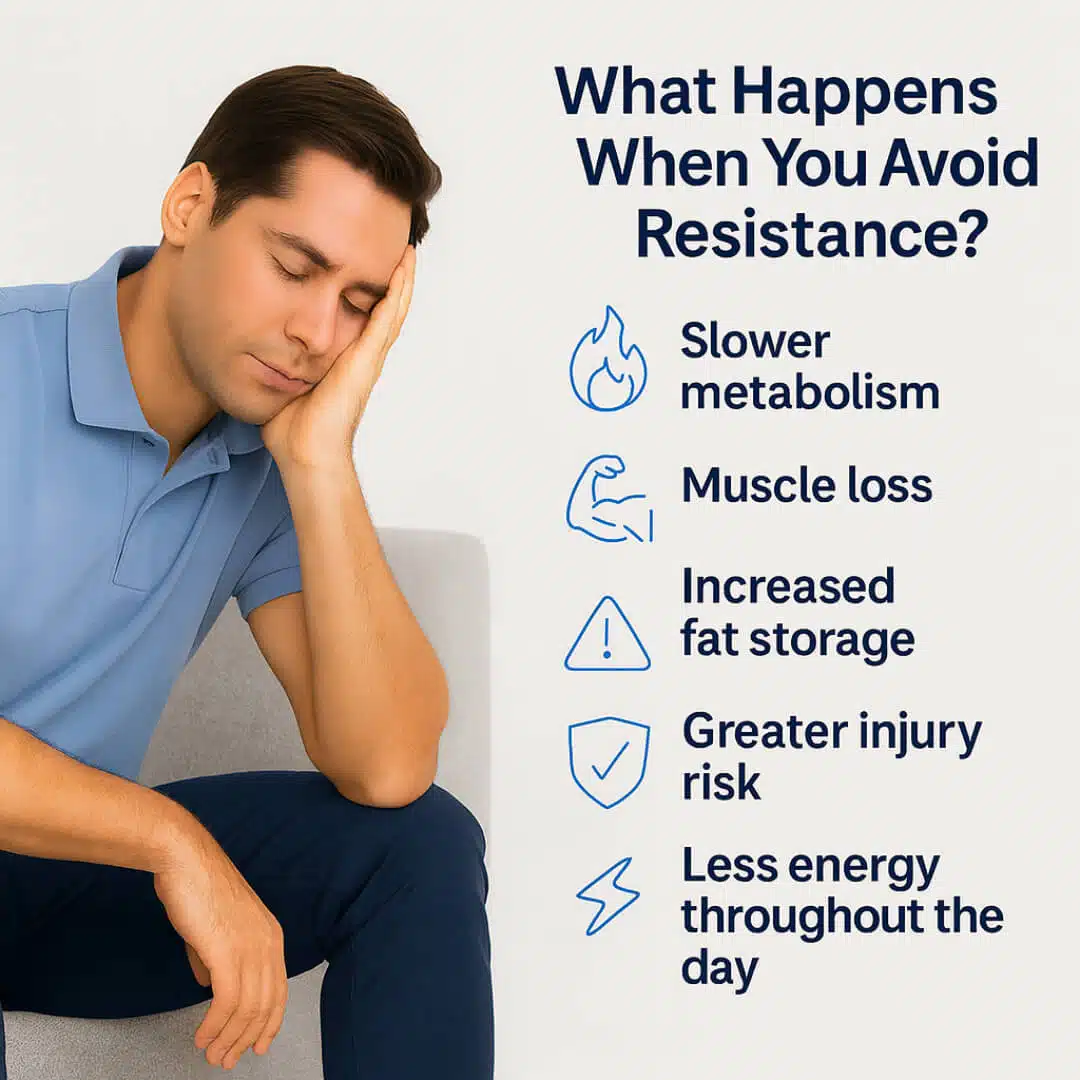
When we don’t include resistance in our movement routine, our bodies become really good at conserving energy. While that might have helped our ancestors survive famine, today it can lead to:
- Slower metabolism
- Muscle loss
- Increased fat storage
- Greater injury risk
- Less energy throughout the day
In short: your body adapts to “easy”. And in doing so, it stops changing.
The good news? You don’t need to hit the gym 5 days a week or lift heavy weights to start reversing the trend. What you need is a smart, progressive, and personalized approach—one that challenges your body just enough to spark growth.
Final Thoughts: Resistance Is the Reset Button Your Metabolism Needs
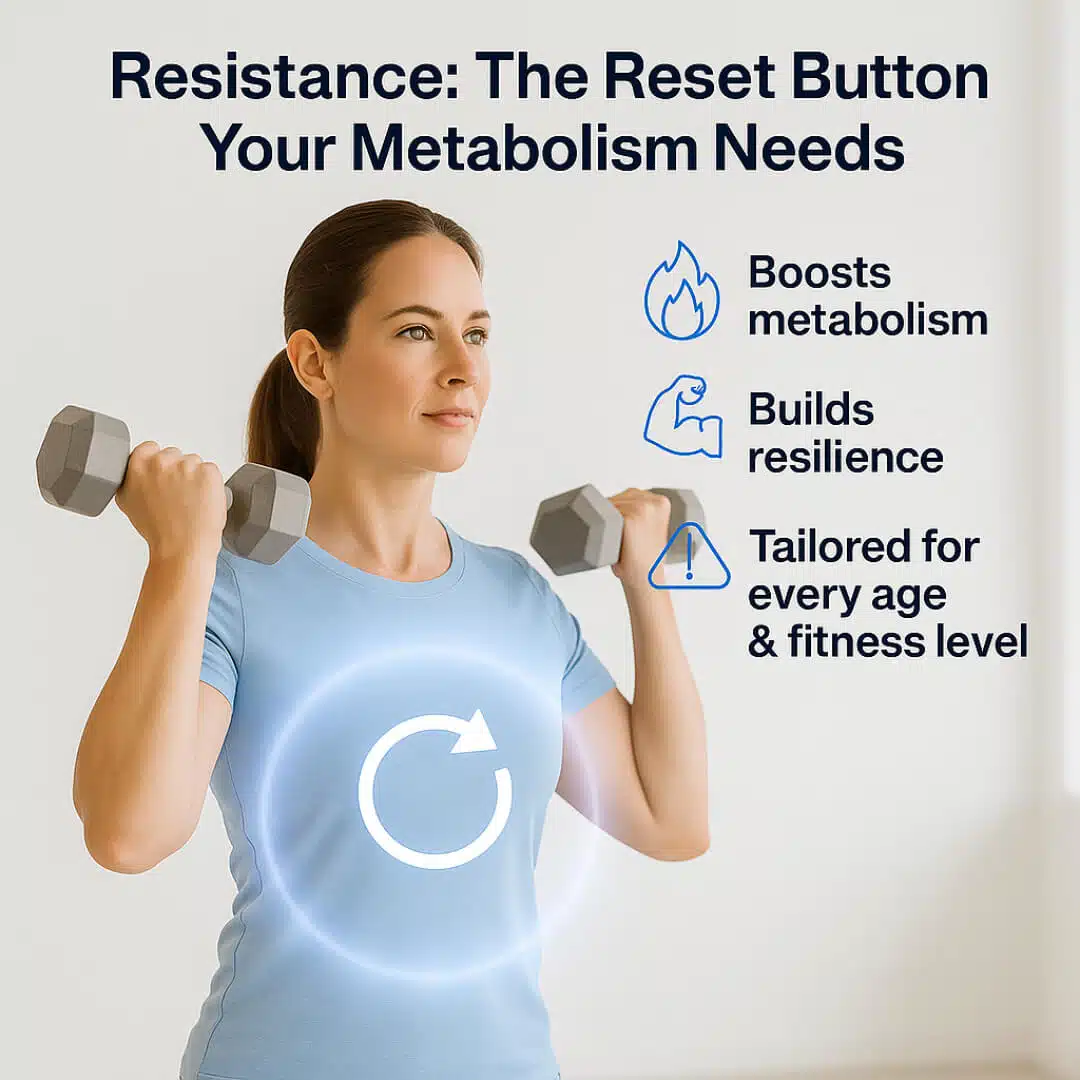
If you’ve been working hard but feel like your body’s stuck—or worse, going in the wrong direction—there’s a good chance you’re under-challenging your muscles.
Resistance training isn’t just about building strength or muscle tone—it’s a metabolic necessity. It keeps your engine revving, your body resilient, and your results sustainable.
And the best part? It can be tailored to any age, fitness level, or injury history. Whether you’re recovering from pain, managing pelvic health issues, or just looking to stay lean and strong, resistance training can be your secret weapon.
Ready to Boost Your Metabolism and Move with Confidence?
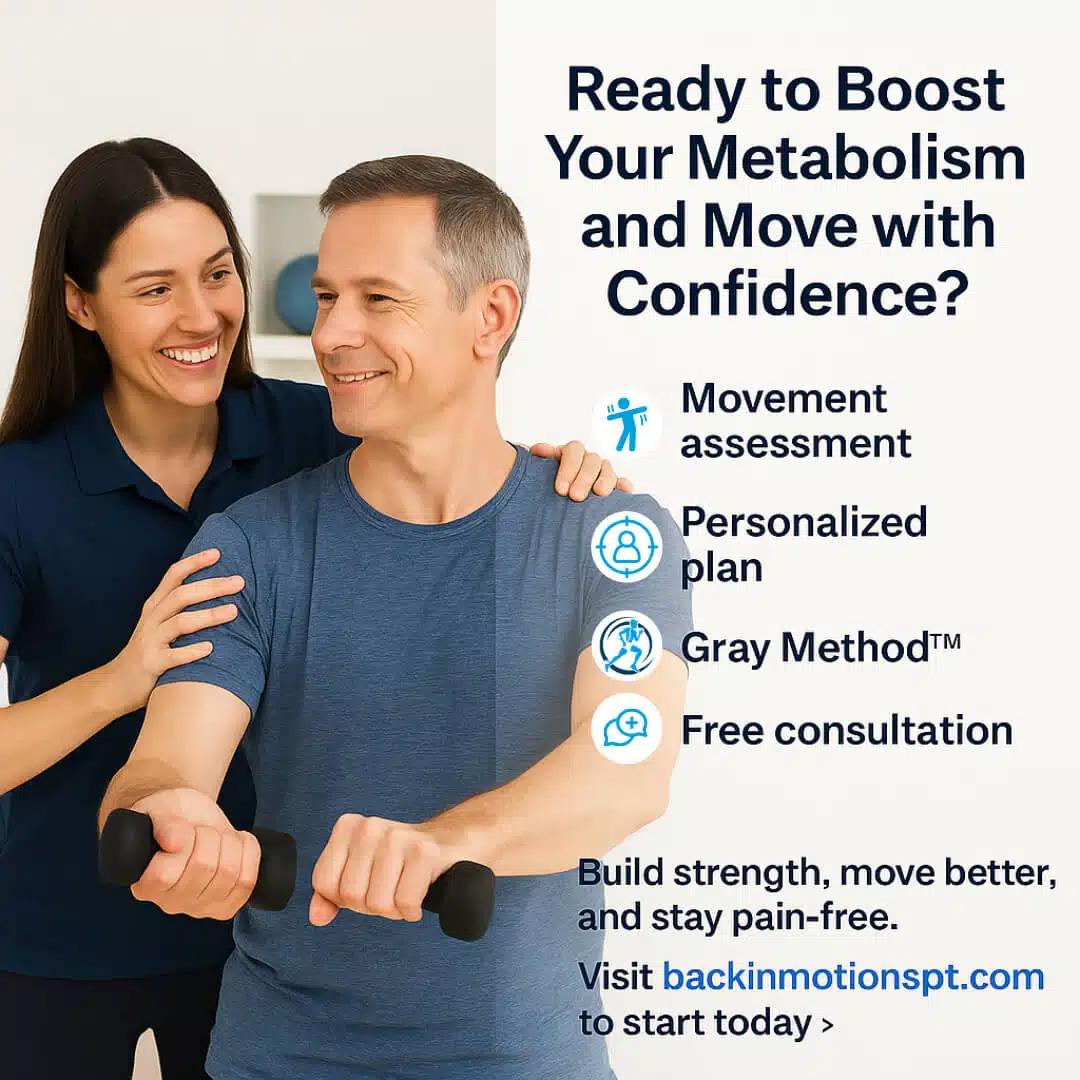
At Back In Motion Physical Therapy & Performance, we help you build a body that burns more, moves better, and stays pain-free—without extreme workouts.
We combine movement assessments, personalized plans, and root-cause rehab to help you build real strength, safely and effectively.
- Learn more about our Gray Method™ for full-body strength and metabolic health
- Schedule a Free Consultation to see where your movement and metabolism may be stalling
- Start your journey toward feeling stronger, leaner, and more energized at any age
👉 Visit backinmotionsspt.com to get started today.

